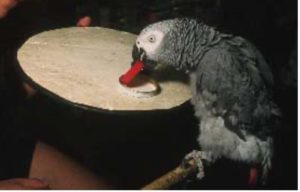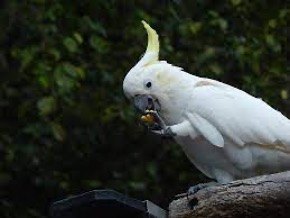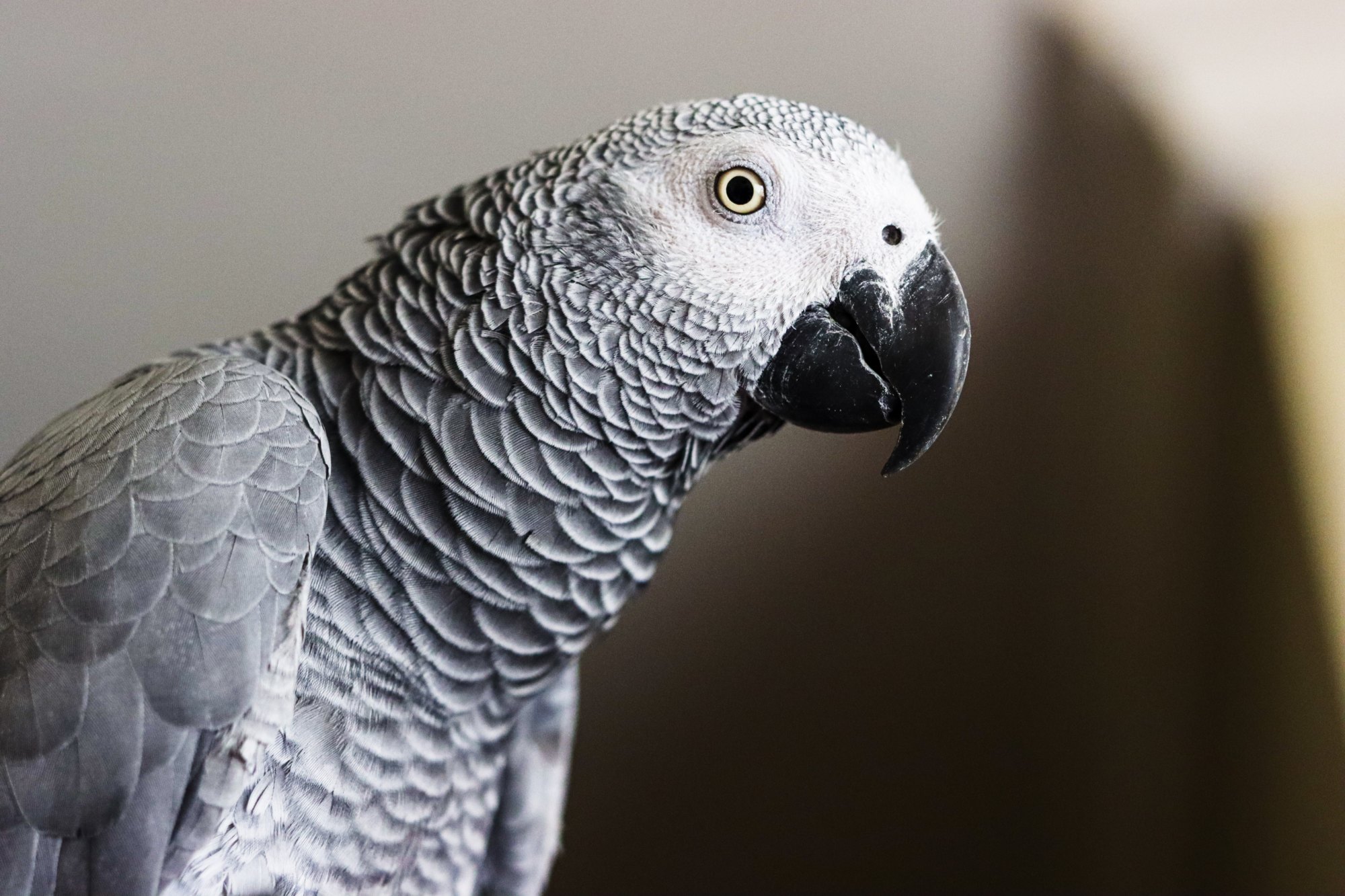
Approximately a year ago, I wrote about a study on contrafreeloading[https://lafeber.com/pet-birds/inside-dr-pepperbergs-lab-play-is-the-thing-if-it-is-the-right-type/] that one of my students, Gabriella Smith, had done with The Alex Foundation for her MA work at Hunter College. Contrafreeloading is extremely interesting because it is pretty much unexpected—it involves working for food that could simultaneously be obtained for free, and why would anyone work for something if they didn’t need to do so?
Well, a range of species engage in this behavior to some extent; we hypothesized that it would occur if the task actually is something fun so that the subjects get the double reward of doing something they enjoy and getting some food they would also like. Indeed, we found that African grey parrots would engage in contrafreeloading when they view the task not as work but rather as some kind of play (Smith et al., 2021).
We tested Griffin and Athena in our lab, Pepper and Franco (companion African greys to the Hartsfields, birds who have also been tested in some of our previous experiments), and Lucci (a companion African grey to one of our research assistants) and used two tasks: Experiment 1 involved a small container that could have a loosely attached lid that the parrot could flip off in order to receive a reward. Treats (sometimes of equal desirability and sometimes of differing desirability) were placed in covered or uncovered cups; the latter were “free.”
Experiment 2 involved the choice between a nut still in its shell (i.e., one that required some work to obtain) and an already shelled, “free” nut. The first experiment was “artificial,” in the sense that the specific conditions would never be experienced in nature. The second was “ecological,” in that it reproduced something African grey parrots face in their daily lives in the wild.
To sum up and repeat what we found: What was clear was that for Griffin, lid-popping was fun—he would even pop a lid on an empty container in preference to eating a less favored treat!—and cracking nutshells was work. But the opposite was true for Athena and Franco, who consistently avoided lids but chose the nut with the shell. Pepper didn’t much enjoy lid-popping either; she and Lucci also thought nutshell cracking was work. Interestingly, it was also clear that all four birds in Experiment 1 (Lucci did only Experiment 2) were willing to work a bit (i.e., pop a lid) if it meant getting a more favored food than the food they could have for free (what we called “calculated contrafreeloading”).
Kea’s Come Into the Mix

However, the research didn’t end there. Smith had attended a conference where she fortuitously met some researchers who study kea—fortuitously, because kea parrots are purportedly much more playful birds than African grey parrots (e.g., Auersperg et al., 2014; Diamond & Bond, 2004). What if we gave the same tasks to the kea? We hypothesized that, being more playful, they would contrafreeload overall more than the Greys. We were partially correct.
We found that, at the group level, although the overall amounts of kea classic contrafreeloading were nonsignificant (to be expected, given that the behavior is basically unlikely and fairly rare—see Menzel, 1991 and Smith et al., 2021), as a percentage of behavior, kea generally contrafreeloaded more than Grey parrots in Experiment 1, whereas the opposite was true for Experiment 2. It turned out that none of the kea chose to crack the shell of the nut (Smith et al., 2022)!
Differing Results
Why was there such a difference in behavior for Experiment 2? Well, we had decided to give the kea the exact same tasks as the African greys so that we could perform a direct comparison of their actions; however, it turns out that kea parrots, although they are indeed playful and eat a very wide variety of foods (Diamond & Bond, 2004), rarely if ever crack nuts in nature! So, the task was not ecologically valid for them—not something they would normally do; maybe they didn’t even recognize the shell as something that contained food.
Should we have used some activity that was more natural for them, like scrounging? This question is typical of some of the difficult decisions that have to be made when doing an experiment—had we used a more ecologically relevant task for the kea, they probably would have engaged in it more, but then we wouldn’t have had a direct comparison with the African greys. The solution is that, at some point, we—or some other laboratory—will have to run a separate experiment on kea parrots, using a truly ecologically relevant task, to see what will happen.

For now, we are re-running Experiment 2 with some cockatoos that live in a sanctuary near the home of one of my undergraduates. The reason is that cockatoos are also purportedly more playful than African greys (Auersperg et al., 2014) and routinely shell nuts. We’ll report the data when we complete our analyses, but it looks as though the cockatoos are more like the Greys,—that some enjoy nut-cracking and will contrafreeload, whereas others do not (Carroll et al., in prep).
In any case, we think we have provided some decent data to show that contrafreeloading, which really shouldn’t actually occur at all, will happen if the subject finds the task at least somewhat enjoyable. Hey…think about all the humans who spend time with video games, where the only ‘reward’ is likely some flashing lights that they could also likely see for free!
References
Auersperg, A.M.I., Oswald, N., Domanegg, M., Gajdon, G.K. & Bugnyar, T. (2014). Unrewarded object combinations in captive parrots. Anim. Behav. Cogn. 1, 470-488.
Carroll, A, Gray, S.L, & Pepperberg, I.M. (in prep). Contrafreeloading in cockatoos.
Diamond, J. & Bond, A.B. (2004). Social play in kaka (Nestor meridionalis) with comparisons to kea (Nestor notabilis). Behaviour, 141, 777–798 (2004).
Menzel, E.W. (1991). Chimpanzees (Pan troglodytes): Problem seeking versus the bird-in-hand, least-effort strategy. Primates, 32, 497–508.
Smith, G.E., Bastos, A.P.M., Taylor, A.H., & Pepperberg, I.M., (2022). Contrafreeloading in kea (Nestor notabilis) in comparison to Grey parrots (Psittacus erithacus). Sci. Rpts. 12:17415
Smith, G.E., Greene, D., Hartsfield, L.A., & Pepperberg, I.M. (2021). Initial evidence for contrafreeloading in Grey parrots via the opportunity for playful foraging. J. Comp. Psychol. 135, 516-533 doi: 10.1037com0000295.

6 Comments